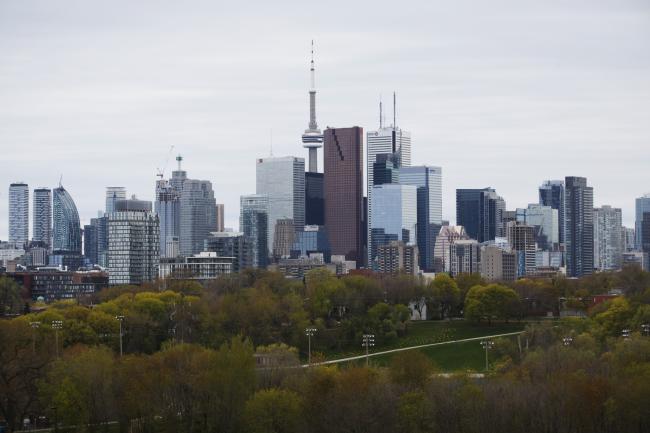(Bloomberg) -- Canada’s growth spurt is over.
The nation’s gross domestic product unexpectedly contracted in August, Statistics Canada reported Wednesday, after a flat reading in July. The latest disappointment adds to signs the process of cooling is well underway, from the blistering pace of growth in the 12 months through June.
“The run of amazing Canadian economic data is officially over, with growth coming back to reality in hurry,” Doug Porter, chief economist at Bank of Montreal, said in a note to investors. “The two-month lull in activity pounds home the point that the frothy growth of the past year is over and done.”
If the economy fails to expand in September, third-quarter annualized growth would be on pace for a sub-2 percent increase, after a gain of 4.5 percent in the second quarter. The Bank of Canada projects growth of 1.8 percent in the third quarter. Economists surveyed by Bloomberg News forecast an average 2.1 percent expansion in the second half.
Unexpected Ride
The nation’s currency dropped as much as 0.6 percent to C$1.2915 against the U.S. dollar after Tuesday’s report, which may fuel concern the Bank of Canada’s caution about raising interest rates will only deepen.
It’s been quite a ride, much of it unexpected. Excluding inflation, Canada’s economy grew by 4.2 percent in the second quarter from a year earlier, a pace not seen since 2000. Employers added 312,700 jobs over that time.
Even with an anticipated second-half slowdown, Canada is headed for more than 3 percent growth for all of 2017. That would end a five-year stretch of sub-3 percent readings that’s already tied as the longest on record in data back to 1926.
Most forecasters, including the Bank of Canada, expect growth to slow to below 2 percent by 2019.
Deficit Spending
A synchronized global recovery and rising global trade volumes are backstopping the growth, along with the bottoming out of the oil shock in western Canada and soaring home prices in Toronto and Vancouver. Government policy has also helped. Federal deficit spending, particularly the enhanced child benefit system, has supercharged consumption.
In the process, the boom has allowed the economy to soak up all its unused resources. According to Bank of Canada estimates, the economy had been awash in excess capacity since the recession before the recent pick-up in growth.
Policy makers will welcome a second-half slowdown as a preventative to overheating and rapid borrowing-cost increases. The Bank of Canada is already moving to bring borrowing costs to more normal levels, with two rate increases since July.
The trick is to prevent the slowdown from gaining momentum in the other direction, especially with a number of potential headwinds on the horizon such as a possible collapse of the North American Free Trade Agreement. That’s why Governor Stephen Poloz indicated last week he’s in no rush to tighten further.
“In the wake of today’s data there is the increasing probability of the next hike being delayed until 2018,” Paul Ferley, assistant chief economist, said in a note to investors.
Canada’s dollar is down almost 6 percent since touching 2017-highs in early September. Analysts meanwhile have been increasingly disappointed with their forecasts. The Citi surprise index for Canada, a measure of a statistic’s actual result relative to its forecast, just moved into negative territory for the first time this year.
Weakness is particularly evident in the trade sector. Canada’s exports have fallen steadily since reaching a peak in May.
